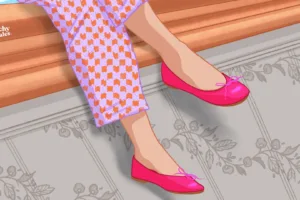Mindful Mending: Where To Rescue Your Pre-Loved Items
Not so long ago, people used to learn basic sewing skills in order to repair and make their clothes last as long as possible. As a modern society, though, we have become less inclined to make do and mend because the advent of fast fashion has made clothes so affordable that there is no incentive to repair them. But a little snag in our shirt doesn’t mean we need to ditch our go-to button-down just yet. By taking a few moments to mend an article of clothing and giving it a second life, we can not only preserve our pre-loved items but also help keep textiles out of our landfills.
But first, maintenance!
Vivienne Westwood, the British fashion designer, famously said: “Buy less, choose well, make it last.” And considering the average lifetime of a garment is just 2.2 years, looking after the clothes we love is now more important than ever. So, when you invest in that dress you love, it’s worth taking care of it so that you can enjoy wearing it for as long as possible. How? Practising good storage habits, using treatments to protect it, and reading washing instructions carefully.
In general, we should invest in quality hangers and learn how to hang our clothes properly, but also protect our garments from humidity, sunlight, and dampness. Most of all we shouldn’t over-wash our outfits or be using products that aren’t suitable for the fabric.
Mindful mending
But what if your favourite dress rips or the beading falls off and you are not good at sewing? Or what if your Manolo Blahnik stilettos you have been wearing for the past 10 years start to be a bit worn out? Send your garments to the clothing hospitals and your shoes to repair service. Here are our choices:
The Restory – London
Founded by Vanessa Jacobs, this London-based luxury repair service will pick up worn shoes and bags and then drop them back good as new. There’s also an in-house restoration business at Harvey Nichols in Knightsbridge, with one launching at Selfridges soon.
Leather Spa – New York
If there’s only one leather repair shop you remember, let it be Leather Spa. With five locations in Manhattan, as well as mail-in services, Leather Spa has been looking after the world’s most discerning clients seeking the finest repair and care needs for their leather accessories for more than 30 years.
Clothes Doctor – Camborne (Cornwall)
An award-winning online clothing maintenance brand, providing high-quality clothing repairs, alterations, and restoration services using eco-friendly care products. Clothes Doctor has a large selection of proprietary repair techniques to cover cashmere, wool, silk, suit fabrics, leather, and suede.
Atelier & Repairs – Los Angeles
A popular Los Angeles re-engineering studio that rescues old clothes, textiles and trims that were once destined for landfills and gives them a second life. Buy one of its original pieces, or take in an old garment and get it transformed into something new in less than three weeks.
Twisted Twee – London
Graphic designer Suzi Warren, owner of Twisted Twee, has made a virtue out of the holes. She hosts regular Clothing Hospital Surgeries in her ‘shedquarter’ in Camden where you can bring your clobber to be worked on while you quaff nosh and chat with other outpatients. She doesn’t just repair, she makes something totally new from old: she can transform garments into bold beautiful pieces of self-expression. Choose among hundreds of designs that you can print onto your old clothes to turn them into exciting new ones again.
Visible Mending, anyone?
Visible Mending is a wonderful way to practice hand-stitching and simultaneously participate in Slow Fashion. Simple stitches transform torn or distressed garments and other textiles through thoughtful, beautiful repairs. Author and artist, Katrina Rodabaugh, with her book Mending Matters: Stitch, Patch, and Repair Your Favorite Denim & More focuses on the importance of mending rips and tears in order to give clothing a longer life.
It explores sewing on two levels: First, it includes more than 20 hands-on projects that showcase current trends in visible mending that are edgy, modern, and bold–but draw on traditional stitching. It does all this through just four very simple mending techniques: exterior patches, interior patches, slow stitches, darning, and weaving.
In addition, the book addresses the way mending leads to a more mindful relationship to fashion and to overall well-being. In essays that accompany each how-to chapter, Katrina Rodabaugh explores mending as a metaphor for appreciating our own naturally flawed selves, and she examines the ways in which mending teaches us new skills, self-reliance, and confidence, all gained from making things with our own hands.




